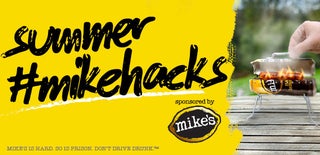Introduction: Roast Your Own Coffee [Whirley Pop Method]
I've been roasting my own coffee a few years and I really love it as a fun, backyard activity that most people don't know is possible. Every time we've roasted, we've introduced new people to the process who made time in their busy schedules because they just had to see it in action! This method is great because it's a lot less fickle than other roasters and there are still several jobs for people to rotate through, making this a nice activity for a group of 3+.
I picked up a Whirley Pop Popcorn Maker for $1 at a yard sale after hearing it was a good option for roasting but it produced too much smoke to use indoors in my apartment. After losing access to the space we've been roasting on a charcoal grill, I went back to the Whirley Pop and found a willing co-roaster with a backyard and grill that we could use and we were in business!
This couldn't have been easier. This process was a lot less setup than the charcoal roaster and the resulting coffee is mighty tasty. I use most for espresso and it produces a great crema. (I'm currently sipping on an latte made from home roasted beans! Mmmm.)
Step 1: Gather Supplies
You will need:
- Whirley Pop Popcorn Maker
- A heat source. We used a gas grill, but anything you can heat outside (Coleman stove, small single electric burner, backpacking stove, etc.) would all work.
- Green coffee beans
- A scale
- Empty bags for the roasted coffee (and a pen/marker)
- Two metal bowls/pots/colanders for cooling
- A thermometer
- A cast iron pan
I get all my green coffee beans from Sweet Maria's and frequently consult them for roasting tips. They're just an excellent resource and supplier.
Step 2: Measure Your Beans
The Whirley Pop can handle between 8 and 16 oz of green coffee beans. We tried different weights to start and noticed different roasting times as well as cooling after. It's good to know what you're starting with.
Step 3: Prep Your Whirley Pop
If you have one, I highly recommend putting a cast iron skillet under the Whirley Pop. It helps to keep the beans from getting scorched and we noticed a big difference. Bring the burner up to temperature - you want to shoot for ~400 degrees Fahrenheit, which will be a different setting depending on your heat source.
A note on temperature:We tried a traditional grill thermometer but couldn't find a way to attach it to the Whirley Pop without leaving the lid propped open. This laser thermometer ended up being a lot of fun and was accurate enough for our purposes.
Pour the measured green beans into the Whirley Pop once it's hot. This process will yield smoke, so just know that upfront. Nothing should be on fire, but it will smoke as long as you are roasting.
I highly recommend Sweet Maria's guide for this method to see the pros and cons, as well as any other tips you might find useful.
Step 4: Keep the Beans Moving
Roasting can take between 10 and 20 minutes depending on the beans, the amount you put in, the heat, and how much you cooled off between batches or if this is your first for the day. Listen to the cracks - this method is quiet enough that you'll hear something like popcorn cracking when the beans have been in 8 or so minutes. After this point, the coffee is drinkable! Keep roasting until you reach your preferred roast (this is one of the biggest benefits of roasting your own coffee!) but know that the beans will continue to roast after you dump them and begin the cooling process, so it's wise to stop short and let the beans catch up. Otherwise, my best advice is to find someone who enjoys darker coffee than you for any mistake batches ;-)
Step 5: Pour and Cool
Dump the beans from the Whirley Pop into a container you can stir or pour from. We found pot work really well because they have handles.
Pouring the beans back and forth accomplishes two things. First, it will cool the beans which slows the roasting process and eventually stops it altogether. The second is true with most beans. You'll notice lighter, blonde flakes floating in the air in the one photo. This is called chaff and, while tasteless, can be pesky in grinding and drinking coffee. Agitating the beans usually removes most of the chaff and we've found that pouring the beans between the two pots while gently blowing helps the process.** I usually do this back and forth until the beans are cool enough for me to run my fingers through and be able to keep them in the beans without pain from the heat. Careful, though, as the metal pots will absorb the heat as you cool the beans.
**Blowing too hard on the beans will cause them to spill out all over the patio...in case you were wondering.
Step 6: Let the Coffee Rest & Prepare
The ideal is to let the beans rest overnight and have the coffee fresh the next day. Notice the different roasts of your various experiments. It's not terribly complicated and after about two batches we had a good process in place to get a consistent roast at the level we wanted.
The beans should be good for whatever process you like! Grind, add water, and enjoy!

Finalist in the
Teach It! Contest Sponsored by Dremel

Participated in the
Remix Contest

Participated in the
Great Outdoors Contest

Participated in the
Summer #mikehacks Contest




![Raised Bed Garden [for Those With Only Hand Tools!]](https://content.instructables.com/F2Q/UUXE/JUQSKGLC/F2QUUXEJUQSKGLC.jpg?auto=webp&crop=1%3A1&frame=1&width=130)








